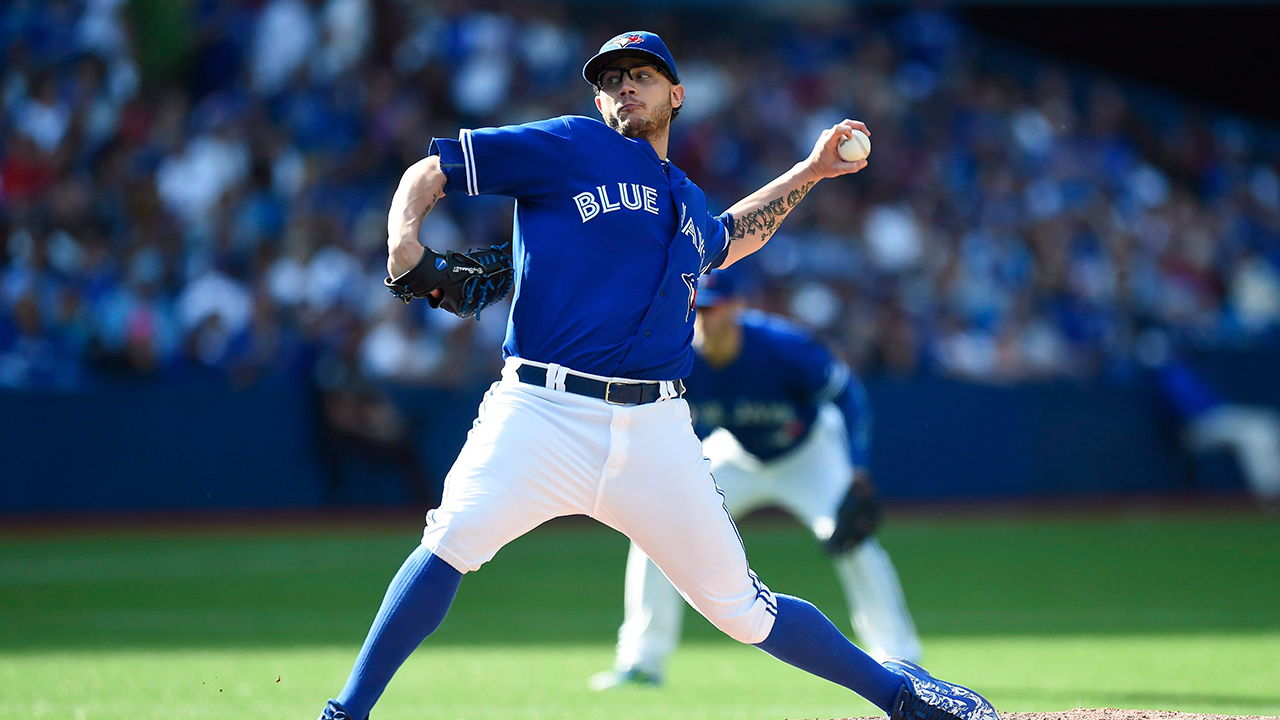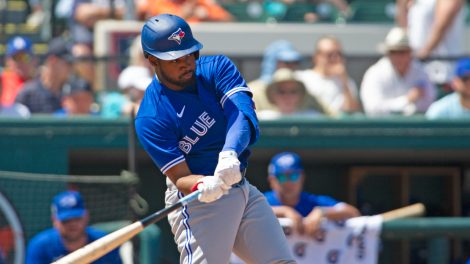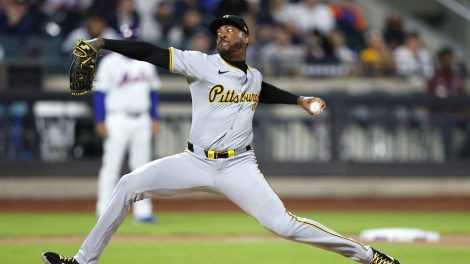TORONTO – Considering that Brett Cecil didn’t allow an earned run after June 21 last year, it seemed safe to assume that left-handed relief would be a strength of the 2016 Toronto Blue Jays.
Those assumptions were shattered within weeks. Cecil lost as many games as the Chicago Cubs in April and had a 5.23 ERA when he hit the disabled list with a torn lat in May. Making matters worse, Franklin Morales had nothing left on his fastball and Aaron Loup wasn’t the answer either.
Because Cecil’s season numbers are still worse than expected (a 4.26 ERA with 37 strikeouts, eight walks and five home runs in 46 appearances), it’s easy to miss that he’s actually been pitching far better of late. Dating back to July 22, Cecil has 22 strikeouts against four walks over the course of 15.2 innings for a 1.72 ERA.
Manager John Gibbons says Cecil’s pitches have re-gained the late life they lacked early in the year. Catcher Russell Martin likes what he’s seeing from Cecil’s best pitch, his curveball.
“Good velocity on it. Good action on it,” Martin says. “I think he’s done a better job of making it look like a strike when he’s got count leverage of making it break late out on the zone and get some swings and misses.”
The sharpness of the pitches isn’t the only thing that’s changed since those early-season struggles. After consulting with Blue Jays pitching coach Pete Walker Cecil decided to stop shaking off his catchers altogether. The change has allowed him to clear his head and rely on Martin, Josh Thole and Dioner Navarro to call every pitch.
“I trust those guys,” Cecil says. “Right now it’s just me not having to think my way through an at-bat. It’s just ‘OK that’s what you want?’ I’ll do that to the best of my ability.”
Until this year, Cecil had always called his own games, shaking off signs from his catchers when he preferred other pitches. That approach worked well at times, but it does have drawbacks. Since Cecil would often shake off curves to get to his fastball, alert hitters could make educated guesses about what was coming. Plus, it required Cecil to consider hitter tendencies constantly, comparing real-time results to the video he watched before games. These days he’s been watching less video, relying instead on the eyes and experiences of his catchers.
“So far it’s been working,” says Cecil, who hasn’t shaken off a sign since he faced the Angels August 24.
It’s an approach more reminiscent of Mark Buehrle, who relied exclusively on his catchers’ judgment. While it’s not for every pitcher, the strategy seems to be working for Cecil, a free agent after the season.
“It’s a good place to be,” Martin says. “Just get in a rhythm and you don’t have to question the call. You just make the best pitch you can make. Often just simplifying things can be a refresher and free guys up in a way.”
Of course that’s only part of the solution. Even perfect pitch selection wouldn’t matter that much for a pitcher with so-so stuff. Thankfully for the Blue Jays, Cecil’s fastballs have late life and his curveballs are biting again. That’s a welcome development for a team that’s sure to face plenty of quality left-handed bats down the stretch.










